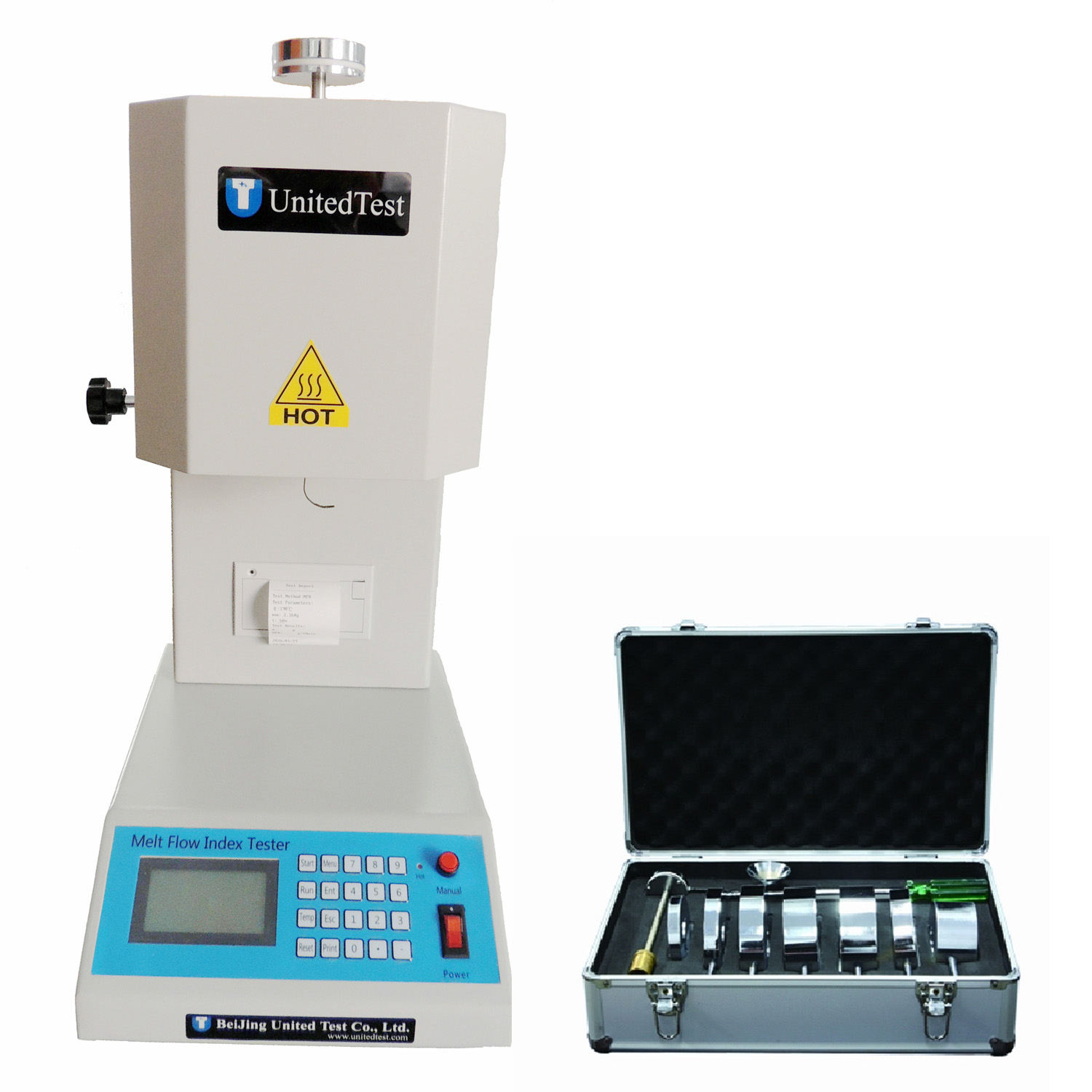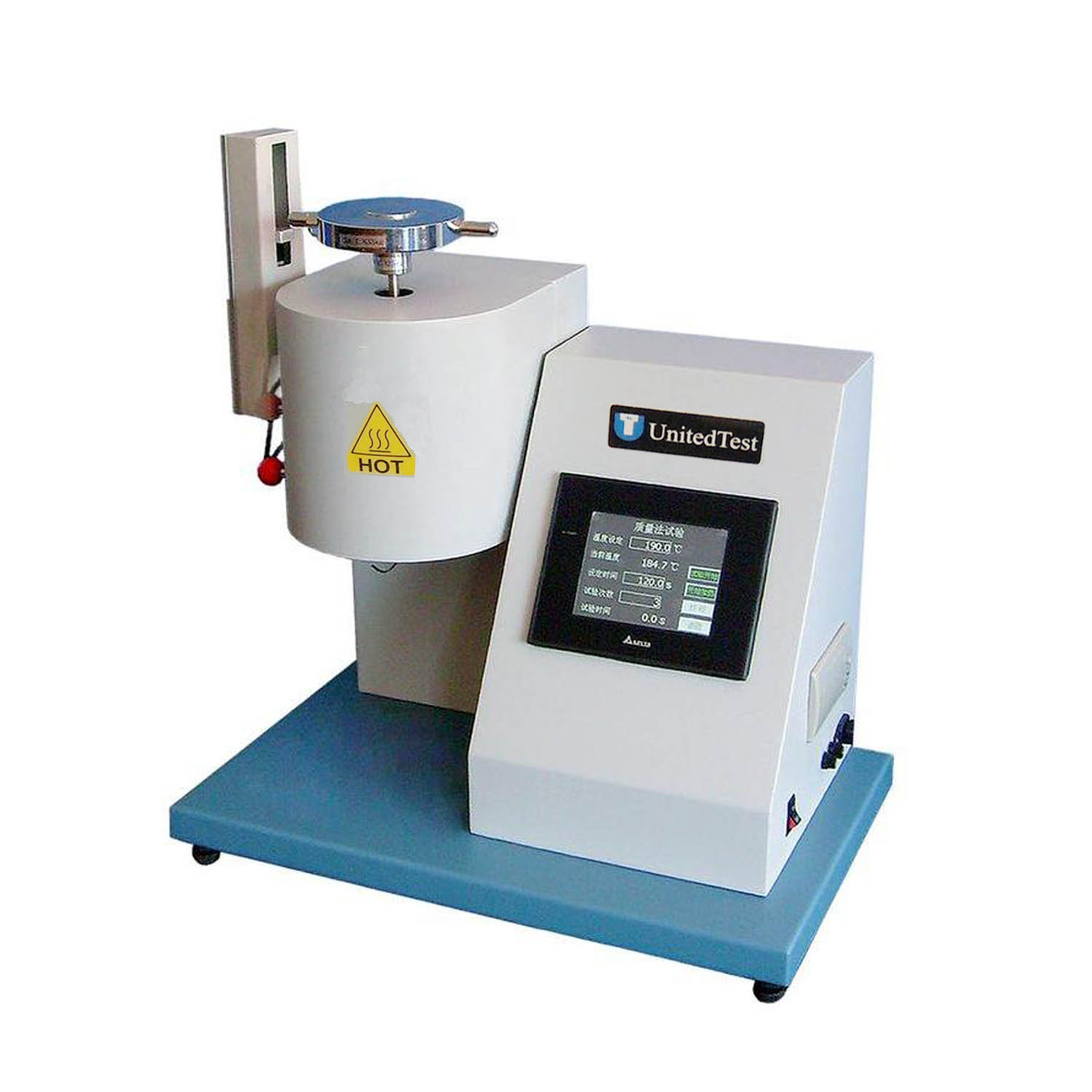The melt flow index (MFI) is a measure of the ease of flow of the molten mass of a thermoplastic polymer. It is defined as the mass of polymer, in grams, that flows in ten minutes through a capillary of specific diameter and length under a pressure applied by prescribed alternative gravimetric weights for prescribed alternative temperatures. Polymer processors often correlate the MFI value with the polymer grade they need to choose for different processes, and in most cases, this value is not accompanied by units, as it is assumed to be g/10 min. Similarly, the test conditions for measuring the MFI are usually expressed in kilograms instead of any other unit. The method is described in similar standards ASTM D1238 and ISO 1133.
The melt flow index is an indirect measure of molecular weight; a high melt flow index corresponds to a low molecular weight. At the same time, the flow index of the molten material is a measure of the material's ability to flow under pressure. The melt flow rate is inversely proportional to the viscosity of the molten mass under test conditions, although it should be noted that the viscosity of any material depends on the applied force. The relationships between two melt flow index values for a material with different gravimetric weights are often used as a measure of the breadth of the molecular weight distribution.
The melt flow index is very commonly used for polyolefins; polyethylene is measured at 190 °C and polypropylene at 230 °C. The plastic engineer must choose a material with a melt flow index high enough for the melted polymer to be easily shaped into the intended article, but low enough for the mechanical strength of the final article to be sufficient for its use.
The ISO 1133-1 standard regulates the procedure for measuring the melt flow index.
The procedure for determining the MFI is as follows:A small amount of polymer sample (around 4 to 5 grams) is taken in the specially designed MFI apparatus. A die with an opening of approximately 2 mm in diameter is inserted into the apparatus. The material is properly packed inside the barrel to prevent the formation of air pockets. A piston is introduced that acts as the means to cause the extrusion of the molten polymer. The sample is preheated for a specified amount of time: 5 minutes at 190 °C for polyethylene and 6 minutes at 230 °C for polypropylene. After preheating, a specific weight is placed on the piston. Examples of standard weights are 2.16 kg, 5 kg, etc. The weight exerts a force on the molten polymer, which immediately begins to flow through the die. A sample of the melt is taken after the desired amount of time and weighed accurately. MFI is expressed in grams of polymer per 10 minutes of test duration. Synonyms for melt flow index are melt flow rate and melt flow index.
The most commonly used are their abbreviations: MFI, MFR, and MI.Confusingly, MFR can also indicate "melt flow ratio," the ratio between two melt flow rates with different gravimetric weights. More accurately, this should be reported as FRR (flow rate ratio), or simply flow index.
The FRR is commonly used as an indication of how the rheological behavior is influenced by the molecular weight distribution of the material.
previously: (MFI = Melt Flow Index) → currently: (MFR = Mass Flow Rate of Melt)
previously: (MVI = Melt Volume Index) → currently: (MVR = Melt Flow-Volume Rate)
before: (MFR = Melt Flow Ratio) → currently: (FRR = Flow Ratio)












